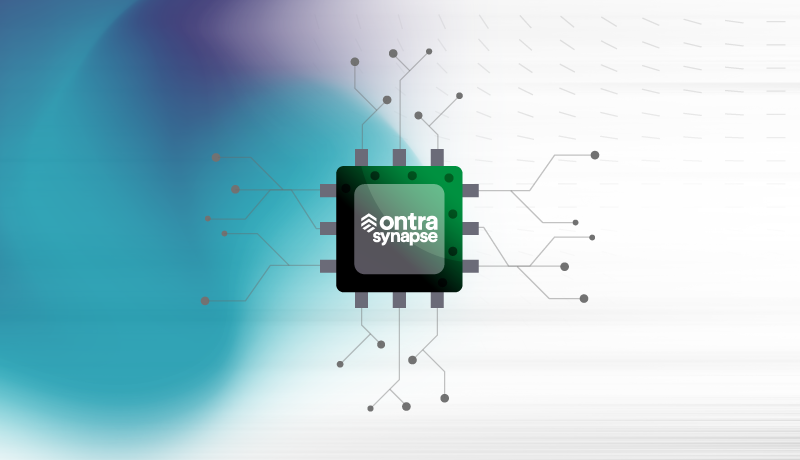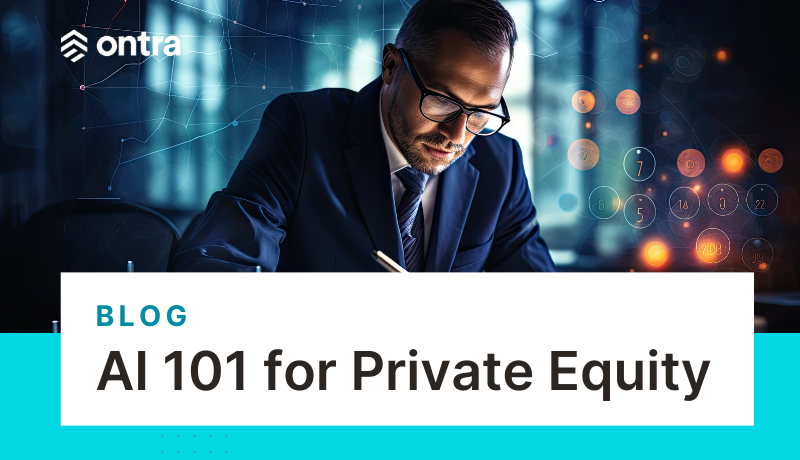
Episode 1: What is artificial intelligence and how does it work?
Gianluca Rossi, Ontra’s Director of Machine Learning, explains the basics about artificial intelligence and machine learning.

Video Transcript
Hi everyone, welcome to Machine Learning With Luca — where you get real answers to all of your AI questions.
I’m your host, Gianluca Rossi. I lead the Machine Learning team here at Ontra, and I’m responsible for Ontra Synapse — the AI that’s built specifically for the private markets.
Let’s get learning!
Today’s question comes from Jesee. He wants to know: “What is AI and how does it work?”
Great question Jesee! That’s a perfect way to start this series
Think of AI as smart technology that can perform tasks that usually require human intelligence — like understanding natural language, drawing an image starting from a description, or making decisions.
The power of AI comes from its ability to autonomously identify patterns in large data sets and then use those learnings to perform a wide range of new tasks.
Let’s look at a few quick examples. What would you guess is the next number in this series: 10, 20, 30, 40…
[Display: 10, 20, 30, 40,_ ]
And, how would you complete this sentence: and they lived happily ever…
My guess is that you could easily spot the patterns here. Aside from the fact that you were all great students back in the day, [thumbs up], you understand these sequences because you’ve seen similar patterns many times.
But what about the first time you came across these questions? Maybe you got them wrong. No big deal. Someone corrected you, you learned from your mistake, tried it again, and got the answer right next time.
Machine learning is a discipline within AI that essentially replicates this same process but at a much more sophisticated level. Engineers feed large amounts of training data into models and then let the models self-adjust until they are able to generate accurate results on new data.
So how does this impact the legal work performed in the private markets? Contract Negotiation is actually a perfect use case for this.
During a negotiation, lawyers frequently want to access relevant precedent and review associated redlines to make sure they’re taking a consistent position across contracts.
But pulling documents can take a lot of time.
AI can analyze a document, understand the associated clauses, and retrieve relevant precedents, just in a few milliseconds. That saves a lot of time and reduces costs and risks.
[Display: increased speed, lower cost, reduced risk]
Of course, that’s only possible if a model truly understands the content of a contract — and that requires a lot of contract-specific training data.
Here’s the big question: Is it time to fully hand off contract work to AI?
Well, not yet. In the private funds industry, a poorly negotiated contract can cost a firm hundreds of millions of dollars and, even worse, its reputation.
That’s why the best legal AI keeps “humans-in-the-loop” to ensure quality and consistency. But that’s a topic for another day.
Jesee, thanks for a great question.
If there’s anything you’d like to know about AI, send us an email to [email protected] and I’ll be sure to get back to you.
And if we end up reading one of your questions in these episodes, we will send you one of our famous Ontra mugs.
Keep Learning! I’ll see you next time.


